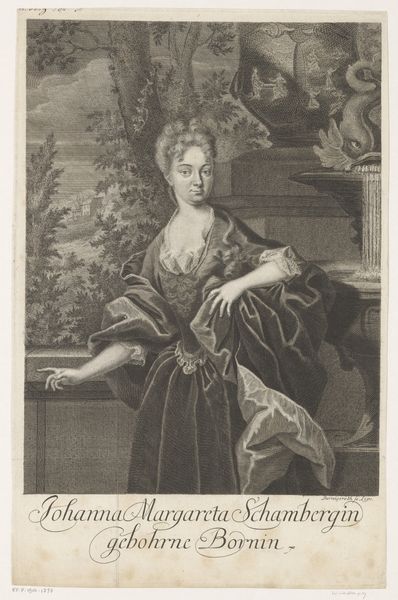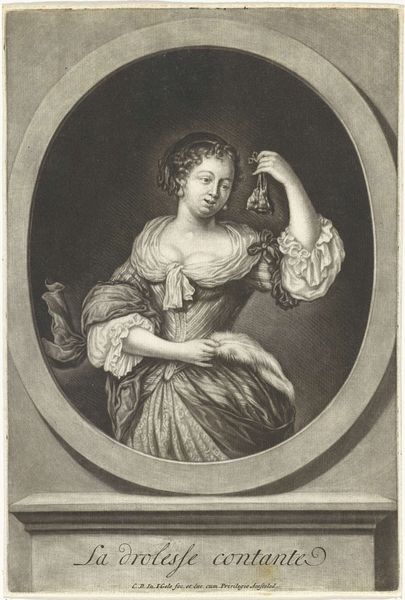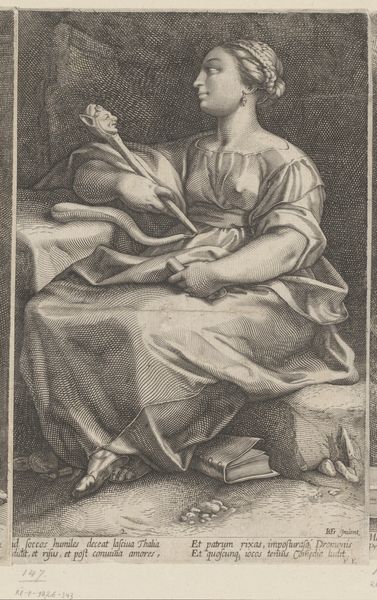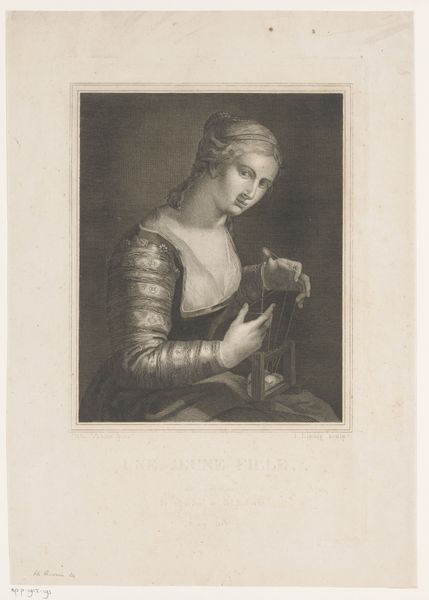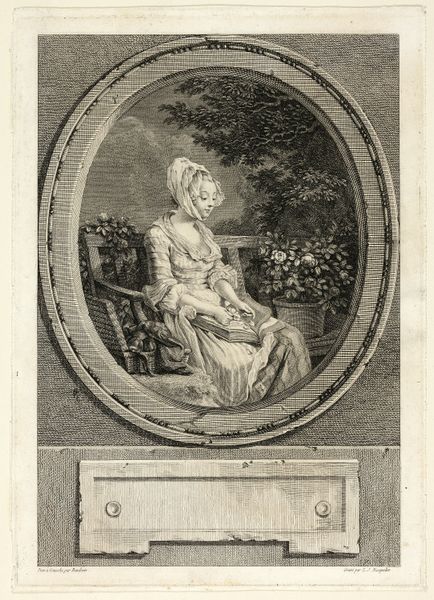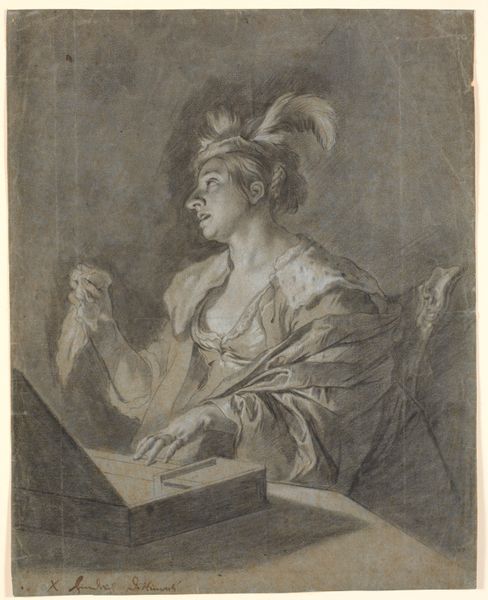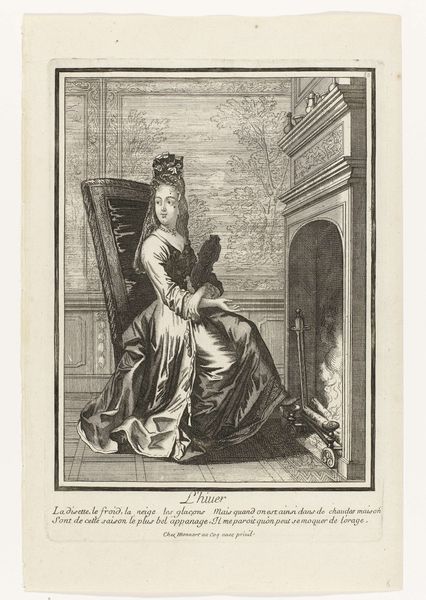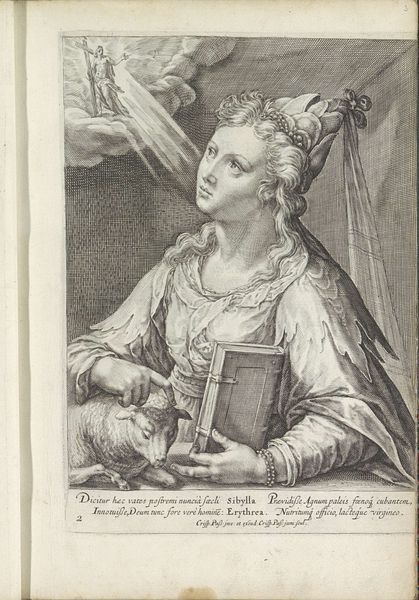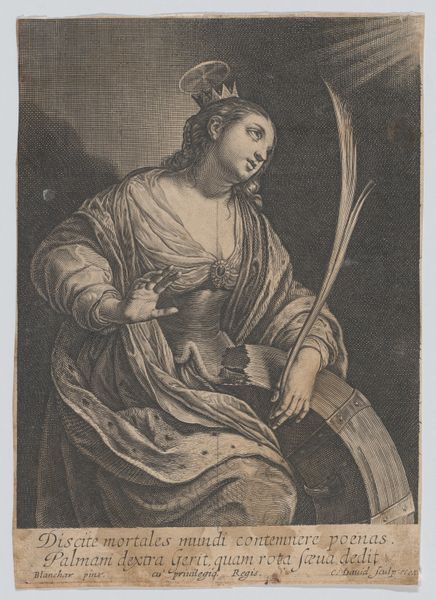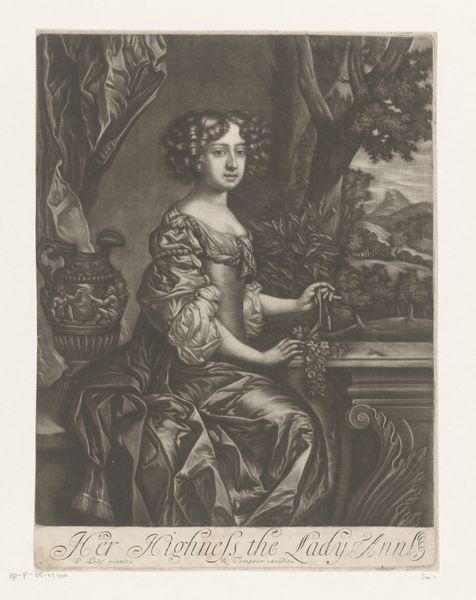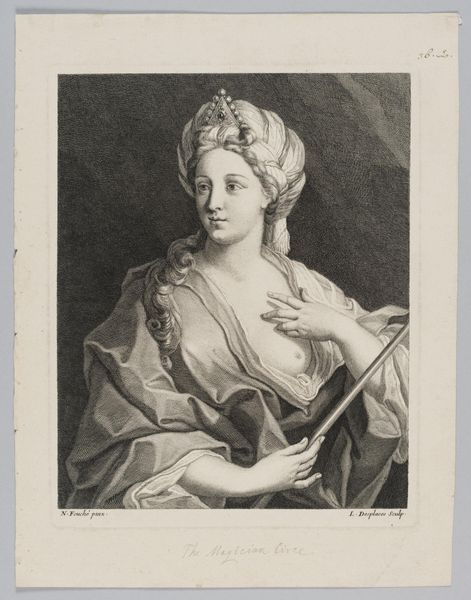
Dimensions: Sheet (Trimmed): 12 13/16 × 9 5/8 in. (32.5 × 24.5 cm)
Copyright: Public Domain
Editor: This is "La Sultane," made sometime between 1755 and 1795, attributed to J. F. G. Colson. It's an etching – the lines are so delicate. It's intriguing to see a woman in what seems like Ottoman dress playing a triangle. What do you make of it? Curator: The image is evocative. Look at the way Colson uses costume and musical instrument. It's not just decoration, it's loaded with meaning. In this period, there was fascination in Europe with the "Orient" or more specifically the Ottoman Empire. What feeling do you get? Editor: Exoticism, definitely! But also maybe a slight…distance? Like she's an idea more than a real person. Is she even supposed to be Turkish or Ottoman? Curator: Precisely. This connects to a long history of Western representation. Sultanas and other figures of the "Orient" become symbols – stand-ins for desires, fears, and fantasies. It’s less about accurate depiction and more about projecting a vision. How do you feel about her looking at the viewer? Editor: Almost challenging us. Knowing she’s symbolic complicates it – she is almost defiant and saying to the viewer, “What do you expect to see?”. Curator: Exactly. The symbol itself pushes against expectations, doesn't it? A female figure, possibly representative of a faraway world, yet rendered with delicate lines with European sensibility, prompting contemplation beyond its literal components. Editor: This makes me consider it more as commentary, rather than a direct portrayal. The layering of symbols – the costume, the instrument – creates such a rich context! Curator: Agreed. Art acts as cultural memory, continuously evolving. This image reminds us to question our assumptions when looking at art.
Comments
No comments
Be the first to comment and join the conversation on the ultimate creative platform.
